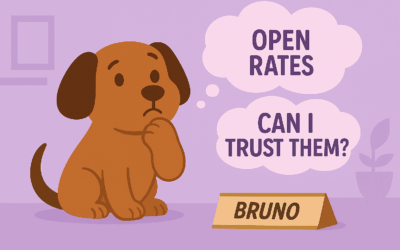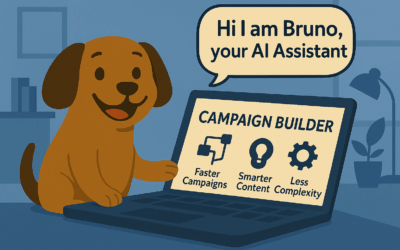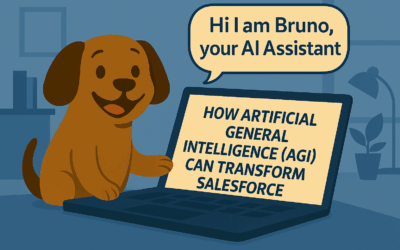Crafting the Perfect Favorite-Triggered Journey in Marketing Cloud
A favourite-triggered journey is one of the most underutilised opportunities in lifecycle marketing. When a customer clicks the heart icon or adds an item to their favourites or wishlist, they are sending a clear signal of interest without yet committing to purchase. This moment is precious because it happens between discovery and decision: the user is signalling desire but may still be comparing options or waiting for a reason to buy. In Salesforce Marketing Cloud you can capture this signal and build a personalised follow up that keeps the product top of mind, nurtures the relationship, and drives conversion. This post explores how to design a favourite-triggered journey from start to finish, covering simple and advanced setups, key performance indicators (KPIs), technical considerations, and the business benefits.
Why Favourite Journeys Matter
From a behavioural perspective, adding an item to favourites is a high-intent action. It means the customer has found something they love enough to bookmark, yet there is still friction preventing them from ordering it immediately. By responding to this behaviour with a tailored communication, brands can drive incremental revenue and loyalty. Studies show that targeted reminders about wishlisted products can increase conversion rates by 20–30 % compared to generic campaigns. More importantly, favourite-triggered journeys allow you to build trust by offering helpful information rather than aggressive sales tactics. A subtle “We noticed you loved this item—here’s what makes it special” message feels like personalised service rather than a pushy ad.
Beyond conversion, favourite journeys give you an opportunity to learn about customer preferences. The items people favourite reveal their style, size, colour and price range preferences. This data can feed into broader personalisation strategies, ensuring that subsequent product recommendations are more relevant. Over time, the cumulative effect of acting on these micro-signals is stronger customer loyalty and higher lifetime value.
Simple Setup: Capture and Remind
For marketers new to automation, start by building a straightforward journey that captures the favourite event and sends a gentle reminder. At its core this flow consists of three steps:
- Trigger: The journey begins when a user adds an item to their favourites. In Marketing Cloud, this event can be captured via an API call or data extension update. You’ll want to store key attributes like product name, SKU, price and URL.
- Send Reminder: Within 24 hours, send a personalised email reminding the user of the item. Use dynamic fields to insert the product image, name and price. Keep the tone friendly and helpful. A subject line like “Your favourite item is waiting for you” invites curiosity without pressure.
- Recommendation Follow-Up: If the user doesn’t purchase after the first email, schedule a follow-up after a few days with related product recommendations. This could be complementary items, more affordable alternatives, or trending products in the same category.
To personalise these emails, you can use AMPscript or dynamic content blocks. AMPscript allows you to pull in product attributes and user-specific details from the data extension. It also enables conditional logic: for example, you might show a coupon code only to first‑time buyers or offer free shipping for high-value items. Dynamic content blocks in Content Builder let you design multiple variations of the email that display based on rules—useful when you want to swap out images or headlines depending on product category.
Advanced Journey: Multi-Channel and Predictive Personalisation
Once you’ve built the basics, expand your favourite-triggered journey by incorporating multiple channels and predictive personalisation. Customers don’t live solely in their inbox; they browse on mobile, scroll through social feeds, and sometimes open push notifications. To maximise your reach, consider adding the following components:
- SMS or Push Notifications: Shortly after the user favourites an item, send a brief SMS or push notification acknowledging their interest. This message could link directly to their wishlist or provide a limited-time incentive. Ensure compliance with local regulations around consent.
- In-App Messaging: If your brand has a mobile app, surface a personalised in-app banner or modal when the user returns. This is a great place to highlight scarcity (“Only 3 left in stock!”) or social proof (“This product is rated 4.8 stars by 500 customers”).
- Retargeting Ads: Use Marketing Cloud Advertising Studio or your preferred DSP to run retargeting campaigns on social media or display networks. Create audiences based on favourited items and show dynamic ads featuring those products.
- Predictive Recommendations: Leverage Einstein Recommendation Builder to generate product suggestions based on the user’s favourite history and broader behaviour. Instead of manually curating related products, Einstein uses machine learning to predict what the customer is most likely to purchase next.
- Lifecycle Branching: If the customer purchases the favourited item, branch them out of the journey and enter them into a post‑purchase or loyalty flow. If they ignore the communications, consider a re-engagement tactic after a specific period (e.g., 30 days).
Building such an advanced journey requires integrating various Marketing Cloud tools—Journey Builder, Mobile Studio, Advertising Studio and Einstein. Start small and gradually layer in channels as you gain confidence in your data quality and automation skills.
Measuring Success: KPIs for Favourite Journeys
To understand the impact of your favourite-triggered journey, track metrics at both the email and journey level. Key KPIs include:
- Open Rate and Click-Through Rate (CTR) for reminder and recommendation emails. Comparing these to baseline campaigns helps gauge engagement uplift.
- Conversion Rate: The percentage of users who purchase the favourited item after receiving the reminder. Consider including a time window (e.g., within 7 days of the first email) to attribute conversions appropriately.
- Average Order Value (AOV): Are customers who receive favourite reminders spending more than those who don’t? This indicates cross-sell or upsell effectiveness.
- Time to Purchase: How quickly do users move from favouriting to purchasing with the journey versus without it? Shorter timeframes suggest the campaign is removing friction.
- Audience Growth: The number of unique users entering the favourite journey each month. Monitoring this trend helps plan inventory and promotional calendars.
Use Marketing Cloud reports or Datorama dashboards to visualise these KPIs. Segment results by device, customer segment, product category and offer type to uncover deeper insights. Test variables like subject lines, send times, incentive amounts and recommendation algorithms to optimise performance.
Technical and Schema Considerations
A successful favourite-triggered journey relies on robust data capture and schema alignment. Ensure that your ecommerce platform sends a real-time event to Marketing Cloud whenever a user favourites an item. This may require custom API integrations or middleware to transfer data. Store favourite events in a dedicated data extension with fields for customer ID, product details, timestamp, and any contextual information like device or session ID.
From a schema perspective, use the Article schema type for the web content you create around these campaigns. In WordPress, plugins like Yoast SEO help you set the article’s schema markup, ensuring search engines understand the structure of your content. Keeping schema updated means that if you publish a blog article explaining your favourite-triggered strategy, it will be accurately represented in search results.
Ensure that your event data model aligns with your broader customer data platform. Because favourite actions are behavioural, they should feed into a unified profile that also includes demographic, transactional and engagement data. This unified view supports segmentation and personalisation across all journeys, not just favourites.
The Payoff: From Interest to Loyalty
When done thoughtfully, favourite-triggered journeys deliver value across the funnel. They convert interest into sales by reminding customers of what they love and offering relevant alternatives if the original item no longer suits. They enhance the customer experience by showing that your brand pays attention to signals of intent and responds with helpful, timely messages. And they provide rich data that informs your broader personalisation strategy.
For example, suppose a customer favourites a high‑end jacket but ends up buying a mid‑priced sweater recommended in the journey. You’ve still secured a sale, learned about their price sensitivity, and preserved goodwill. Over time, each micro-conversion builds loyalty, making the customer more likely to return and spend more.
For more inspiration on how to create effective loyalty flows, read our article on crafting the perfect VIP loyalty journey in Marketing Cloud. It offers insights into rewarding high-spend customers and building emotional loyalty.
For industry insights on wishlist and favourites campaigns, check out this external resource: https://www.omnisend.com/blog/wishlist-email/. It provides practical examples of reminder emails and recommendations that drive conversion.
By orchestrating a favourite-triggered journey in Salesforce Marketing Cloud that balances reminders, recommendations and predictive personalisation, you’ll create a seamless experience that turns hearts into checkouts. Start simple, iterate based on data, and watch as these small acts of attentiveness translate into substantial business results.



